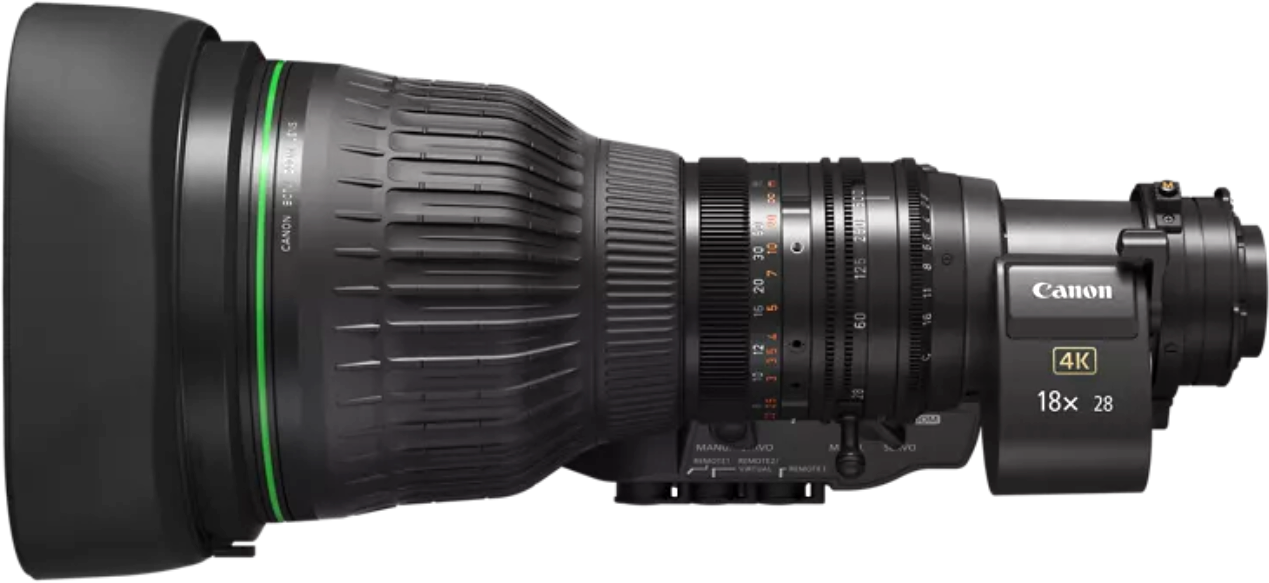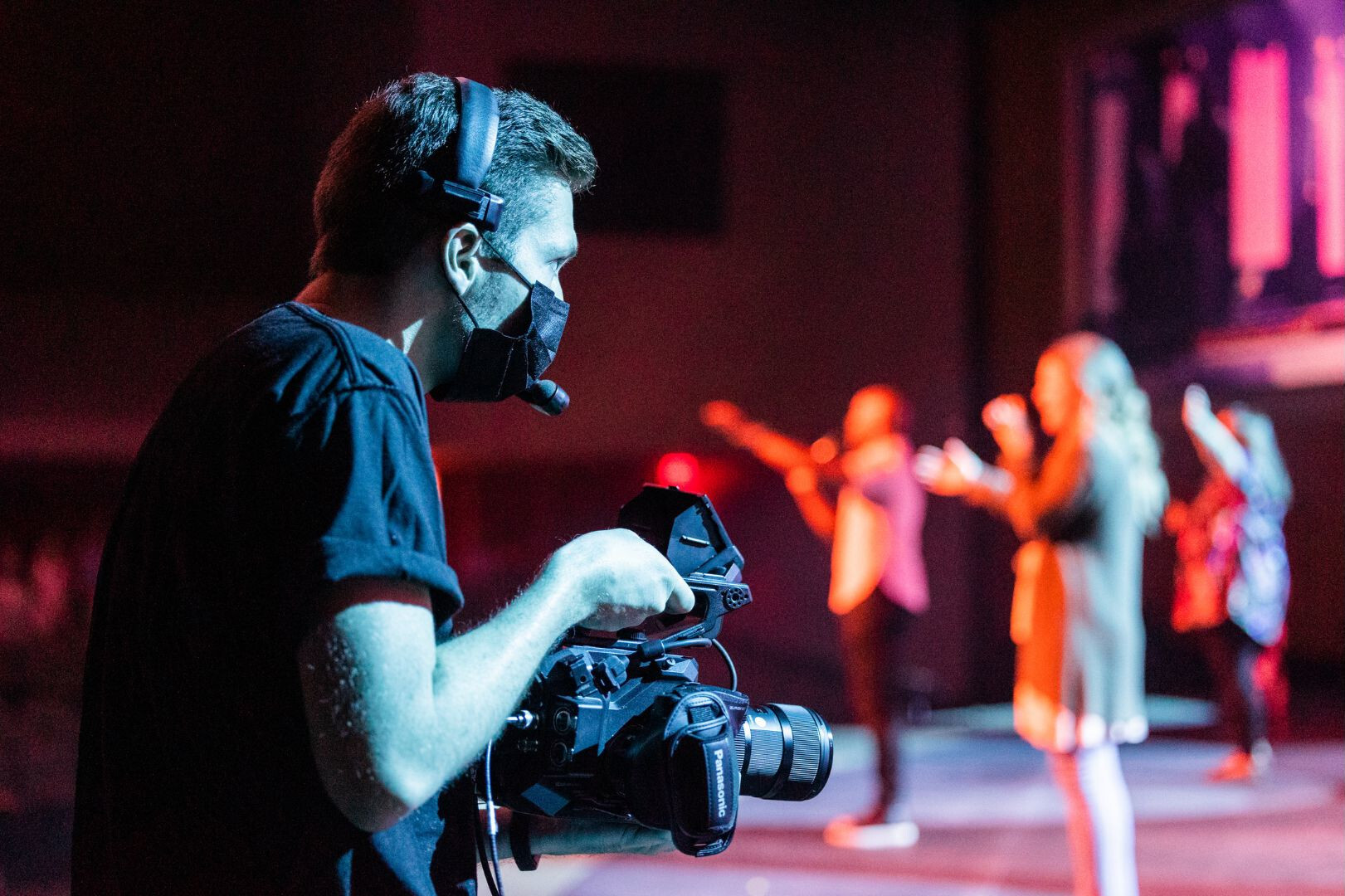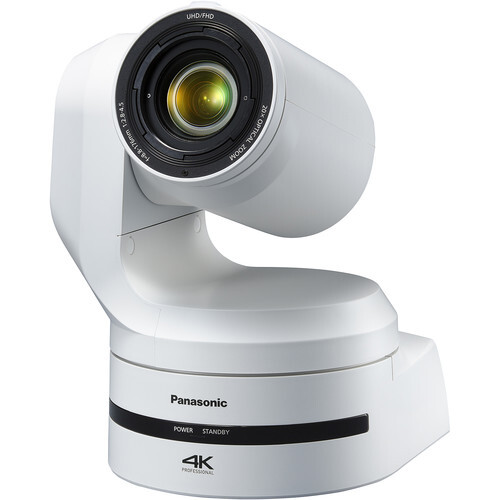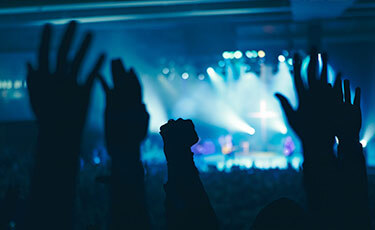
Live Production Cameras are not as simple as a One Size Fits All approach. There are multiple types of modular cameras with separate lenses, accessories and settings galore. DSLR, Broadcast and Cinema Cameras. EF, ENG and PL lenses. Auto-focus, have internal components that vary based on their intended uses, but the overall construction of the cameras themselves are similar.
Components of a Camera



Camera Body
The Camera Body contains the imaging sensor that captures light and reproduces the image, as well as a way to preview the image, although the viewfinder itself can vary depending on the style of camera. The Camera Body also contains an array of physical connections. For video output there could be HDMI, Mini-HDMI, SDI, or SMPTE Fiber to send signal to the Video System and to an auxiliary video display for the Camera Operator. For audio connectivity there could be XLR (potentially with phantom power for an external microphone) or stereo 3.5mm. For capturing purposes, you may also find SD, Compact Flash or USB/USB-C slots, a network jack for Live Streaming and options to connect external hand controls for Zoom, Focus, Iris and full CCU control. Add in ports for Power, Intercom and Tally and there could be a variety of cables run to/from the Camera Body.
However, the Camera Body serves no functional purpose without a Lens.
Camera Lens
The Camera Lens mounts to the front of the Camera Body. Lenses come with a wide variety of features and specifications, so getting the most out of your camera system starts with choosing the right lens.
The camera lens determines how much light is allowed into the image sensor. This ultimately determines the quality and brightness of the final image. To select the appropriate lens, we will need to understand how cameras process light to create an image.

How Cameras Process Light
In order to capture an image, a camera must be able to view light being reflected from the subject. Whether integrated onto the camera body or purchased separately, there are several terms used to quantitatively measure how a camera processes light. Terms like Aperture, ISO, Shutter Speed, Focal Length, and Depth of Field allow you to determine exactly how a lens will react in certain environments.
Understanding the Lingo
Aperture
Aperture is a measurement of the distance from the edge of Iris to the inner edge of the Lens. This measurement is written in “F.Stops”. The smaller the F.Stop, the smaller the gap. A low F.Stop like F1.4 means that the Iris is almost completely open. This results in a bright image, but a smaller Depth of Field which creates a tight window in space where the subject will remain in focus.
A high number like F16 means that less light is physically allowed into the camera, but also means a larger Depth of Field so the subject can move more and remain in focus.

ISO
ISO is a measure of sensitivity to light being processed within the camera. The higher the number, the higher the sensitivity.
However, the higher the number, the more “noise” or “graininess” is introduced as well. Similar in concept to Audio Gain - the more you Gain Up artificially, the more “noise” you hear.
The goal is to keep the ISO as low as possible by matching the level to whatever is “normal” for that environment. If you’re constantly shooting in sunlight (very bright), then you can utilize a much lower ISO since so much light is available.
The opposite is true for darker indoor environments. If the space itself is dark, you need to capture as much light as possible, so you may utilize a higher ISO.
Shutter Speed
Shutter Speed is a measurement of how long the shutter remains open to capture one frame - measured in fractions of a second. The faster the subject moves, the faster the shutter speed must be to capture an image without movement blur. An extremely fast shutter speed lets in a smaller amount of light, but eliminates blur.
Understanding these terms will allow you to select a lens that matches your camera and your physical environment.
Exposure Triangle
The overall level of brightness and light control for an image is known as Exposure. Creating proper Exposure requires a balance of Aperture, ISO and Shutter Speed. Adjusting one setting will inversely affect the others, so it is important to adjust gradually. The easiest way to visualize these effects is with the Exposure Triangle.

Focal Length
Focal Length is a measurement in Millimeters that represents the distance that light must travel to converge at the optical sensor on the lens. A smaller number means that the lens is able to capture a much wider view, a larger number means a much tighter view.
Fisheye/Ultrawide: 8mm - 24mm
Wide Angle: 24mm - 35mm
Standard: 35mm - 70mm
Telephoto: 70mm - 300mm
Extreme Telephoto: 300mm +
Depth of Field (DoF)
Depth of Field is the distance between the closest and farthest objects in an image that appear acceptably sharp. A shallow Depth of Field means that only items in a very small tolerance range are sharply focused - everything in the background is blurry. However, a wide or large Depth of Field means that almost everything in the image is crisp.
Depth of Field is determined by the distance between the camera and the subject, as well as the Aperture of the camera. A smaller aperture gives a smaller depth of field.

Varifocal vs Parfocal Lenses
One of the last traits to consider when selecting a camera lens is maintaining focus throughout camera movement - particularly when zooming in or out. In most scenarios, video directors will want the camera operators to be able to zoom in or out and maintain focus on the subject. This allows for a variety of different shots and creative movement on camera. Limiting operators strictly to left, right, up and down movement without the ability to zoom in and out can quickly become stale. However, this ability comes with a pricetag.
Varifocal Lenses
Varifocal Lenses (commonly known as Photo Lenses) do not maintain focus as the focal length (zoom) changes. This means that as the operator zooms the camera in/out, the image will go out of focus. In most scenarios, this means that the operator cannot incorporate zoom movement into a live shot.
Parfocal Lenses
Parfocal Lenses maintain focus as the camera zooms in or out. This allows the operator to zoom in tight on the subject, grab focus and then manipulate the zoom however they want in a live shot while still maintaining focus. Parfocal lenses allow for users to Push or Pull zoom during a live shot, and integrate much more movement into their shots without worrying about the subject being out of focus. However, because of the additional glass in the lens to maintain focus, these lenses are significantly more expensive.
Camera Peripherals
Once you have selected a Camera Body and Lens, you’ll also need to include any necessary peripherals for the operator. This would likely include a Tripod, External Video Monitor, Intercom, and Tally Light, and may even include a Shoulder Mount, Gimbal, Microphone or Camera Cage to protect the camera itself and attach accessories. Each of these components are designed to maximize the operation of your camera for the end-user in order to achieve the best possible image quality.

Types of Cameras
Broadcast Cameras
Broadcast Cameras have been in use for decades and offer a wide range of control features. At their core, they are designed for high portability and are intended to reduce the amount of workload for the Camera Operator by allowing a remote user in a Broadcast Facility (a remote production room, truck or entirely separate building) to control settings for Exposure, Colorimetry and even Focus. Broadcast cameras are designed with as many features as possible to be integrated into the camera body itself to limit the amount of cabling and allow for easy movement by the operator. And they are designed to integrate seamlessly into other broadcast ecosystems - this means that they generally support a limited number of standardized resolutions and frame rates. In theory, think of a Broadcast Camera like a Zero Turn Mower - it does its job extremely well, but there are limitations on what jobs it can tackle. It cuts grass like a champ, but it can’t plow a field.
Cinema Cameras
Contrast that with Cinema Cameras. These cameras allow for much higher degrees of customizations. Very few integrated components mean that the end-user can choose from a huge variety of add-on products to improve flexibility or performance. But with more accessories comes additional cost, weight and bulk to move around. Cinema cameras also support a huge array of resolutions and frame rates in order to achieve almost any desired “look.” And, in general, Cinema cameras have larger image sensors which allow for shallower depth of field, higher fidelity in low light environments and higher overall image quality. Think of Cinema Cameras like a high-end Tractor - you can add whatever implement or accessory you need to accomplish almost any job, but that amount of flexibility requires a much bigger, heavier and more expensive machine.
DSLR and Mirrorless Cameras
In many ways, the term DSLR has been diluted from its original, technical definition. Technically, DSLRs (Digital Single Lens Reflex) are a class of cameras that use a mirror to reflect light to an optical viewfinder until the shutter is opened to capture an image.
Contrast this with mirrorless cameras, which do not have optical viewfinders; and therefore, do not require a mirror to reflect light upwards or downwards. Instead, light passes constantly through to the imaging sensor and is digitally reproduced on an external electronic viewfinder display. This means fewer pieces within the camera body and allows for even smaller form factors.
However, when capturing video on a DSLR camera, the viewfinder is rendered obsolete since the shutter opens at the predetermined shutter speed. In live-video circles, the term DSLR is commonly used to refer instead to small form-factor, photography-centric cameras that are capable of capturing video.
These cameras often contain large imaging sensors, are phenomenal in low light environments and are lightweight by themselves. But they contain zero integrated features for broadcast operations. Intercom, tally, power supplies and signal converters for video distribution must be incorporated externally. And since the lens mounts do not support parfocal lenses, their functionality can be limited.
PTZ Cameras
PTZ Cameras are network-enabled cameras that allow an operator to control the Pan, Tilt and Zoom remotely for multiple cameras in a system. This reduces the number of operators required since each camera can be controlled separately by a single individual. To best illustrate the differences between traditional manned cameras and PTZs, let’s look at potential pros and cons.



Pros:
Presets allow the operator to recall snapshots at the touch of a button. This can include image framing, color settings and in some cases, even tracking movements of the camera.
Remote Control of all camera functions: Pan, Tilt, Zoom, Focus, White Balance, Exposure, etc.
Reduced infrastructure cost. No need to select an external lens, intercom, tripod or external monitors at each location.
Cons:
Overall image quality for the price. When purchasing a PTZ Camera, you’re not only purchasing a camera with an integrated lens, but you’re also paying for the remote functionality as well. This generally means that the image sensors and lens housings that regulate the maximum quality of the image are inferior when compared to traditional camera systems of equal value. Ultimately, you’re paying more for the PTZ feature set instead of the internal camera optics.
Clunky Operation. A traditional camera on a quality tripod can maintain fluid movement in any direction, or even when changing directions. However, PTZ Cameras are generally operated from a joystick when movement is required. When the sensitivity of the joystick is dialed up enough to be effective, this makes starting and stopping any movement very noticeable. Unless the camera shots remain completely static, it is almost always noticeable when a camera is being operated by-hand or from a PTZ controller.
Vibration. PTZ Cameras are usually installed on walls or suspended from the ceiling. Any structural vibrations made by low-end frequencies can be passed to the camera assemblies. For traditional tripod assemblies, the effects of structural vibration can be mitigated by adding mass to the tripod or by providing physical isolation from the floor through absorptive material. However, because PTZ are relatively lightweight, there is almost no physical mass to absorb energy. And because they are rigidly mounted directly to the structure of the building (obviously, no one wants a camera falling), very little can be done to absorb vibration. And while some manufacturers offer functional Image Stabilization features, this can introduce latency and interfere with the overall quality of the image itself.
Overall PTZ Takeaway: A Personal Opinion
There are scenarios where PTZ cameras are the obvious choice.
When budget and operators are limited, there may not be other viable options.
In scenarios where presenters remain stationary and do not not require seamless movement
from the camera, a PTZ system might be acceptable. However, in most scenarios
where presenters, speakers, singers and instrumentalists move across stage,
a manned camera yields a much higher quality end-product.

The Art of Storytelling
While there are certainly technical aspects to consider between the different types of cameras and how they process an image, the artistic discussions involved can boil down to personal preferences on storytelling. After all, the entire point of capturing or streaming a live event on camera is to engage the audience in the story. In environments where a single person or object is the sole or primary focus of most shots, a Cinema Camera with a lens capable of an extremely shallow Depth of Field may make sense. However, when the story being told through the lens of the camera includes an entire stage or multiple subjects, a Broadcast camera system with traditional lens setup may be more appropriate. Where budget and operators are limited, PTZ may be the best route. And if the equipment needs to be flexible enough to function in both a live environment and in the field, DSLRs may be best.
The team at MediaMerge loves having this conversation with our clients.
There isn’t a one-size-fits-all approach, so we would love to connect
with your team to hear how you want to tell your story.
{{cta('b3e88da6-31c8-4863-a413-d5b850fd13ec','justifycenter')}}